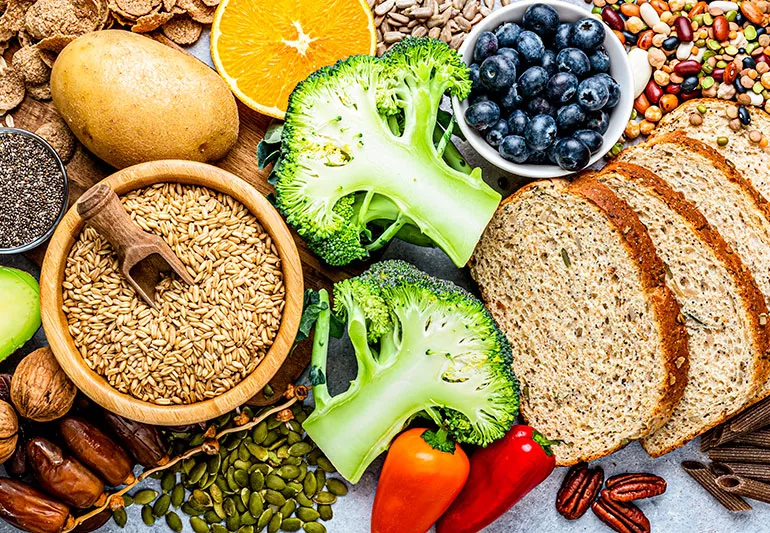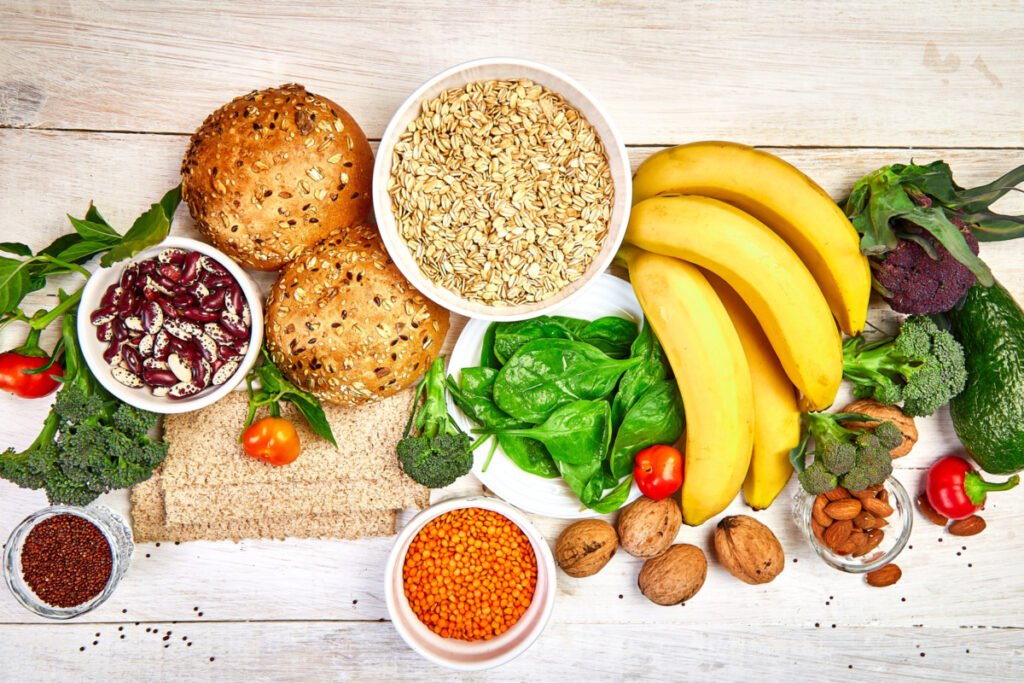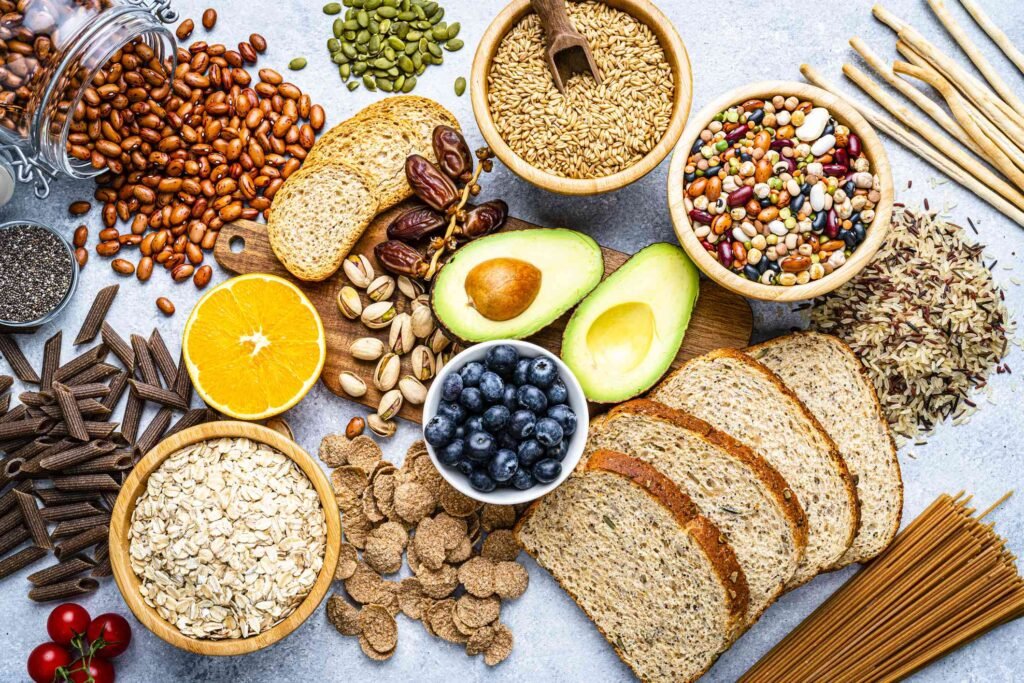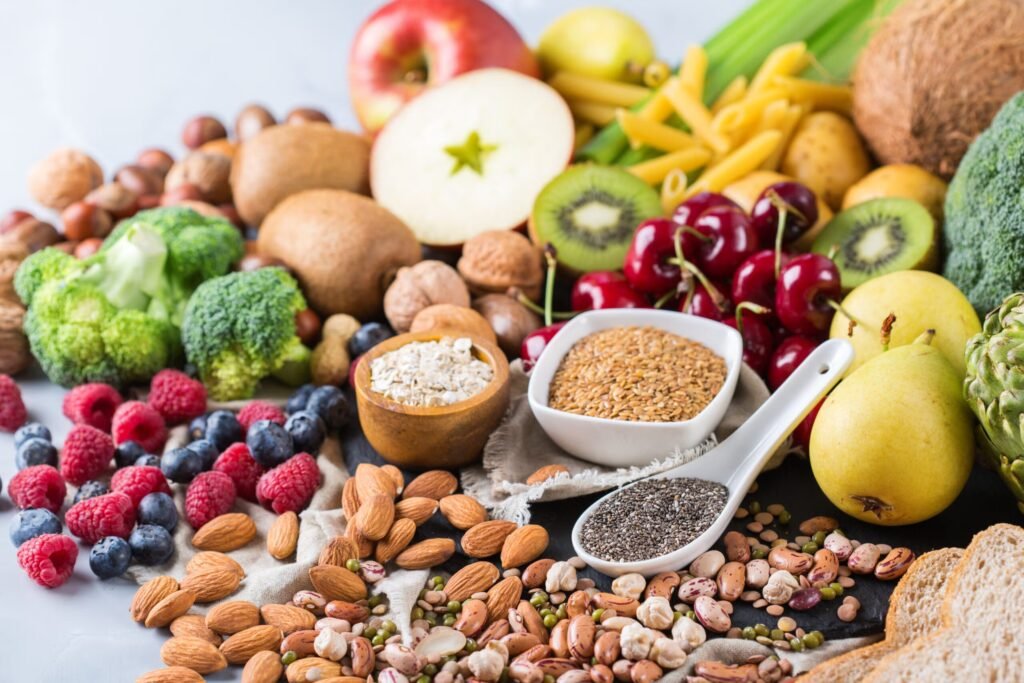Fiber is an essential component of a healthy diet, yet many people do not consume adequate amounts. Found primarily in plant-based foods, fiber offers a wide range of health benefits, from supporting digestion to reducing the risk of chronic diseases. Incorporating sufficient fiber into your daily meals promotes satiety, stabilizes blood sugar, and contributes to overall wellness. This article explores the types of fiber, their health benefits, and practical strategies for increasing fiber intake in a vegetarian diet.
Understanding Fiber

Fiber is a type of carbohydrate that cannot be digested by the human body. Instead of being broken down into sugar, it passes through the digestive system largely intact, providing bulk and feeding beneficial gut bacteria. Fiber is categorized into two main types, each with distinct roles in maintaining health:
1. Soluble Fiber
Soluble fiber dissolves in water, forming a gel-like substance in the digestive tract. Benefits include:
- Lowering cholesterol levels by binding bile acids
- Regulating blood sugar by slowing glucose absorption
- Promoting gut health by feeding beneficial bacteria
Common sources of soluble fiber:
- Oats and oat bran
- Barley and quinoa
- Legumes: Lentils, chickpeas, black beans
- Fruits: Apples, oranges, berries, pears
- Vegetables: Carrots, sweet potatoes, broccoli
2. Insoluble Fiber
Insoluble fiber does not dissolve in water and adds bulk to stool, supporting regular bowel movements and preventing constipation. It also helps maintain digestive health by reducing the risk of diverticulosis and promoting healthy gut motility.
Common sources of insoluble fiber:
- Whole grains: Brown rice, whole wheat, barley
- Nuts and seeds: Almonds, sunflower seeds, chia seeds
- Vegetables: Cauliflower, zucchini, celery, leafy greens
- Fruit skins: Apples, pears, and berries
Health Benefits of Fiber

Fiber contributes to digestive health, weight management, heart health, and metabolic regulation.
1. Digestive Health
Fiber improves bowel regularity, prevents constipation, and supports a healthy gut microbiome. Soluble fiber acts as a prebiotic, feeding beneficial gut bacteria that produce short-chain fatty acids, which enhance gut health and reduce inflammation.
2. Weight Management and Satiety
High-fiber foods increase feelings of fullness by slowing digestion and reducing appetite. This can lead to lower calorie intake, supporting weight management and healthy eating patterns. Meals rich in legumes, whole grains, fruits, and vegetables are particularly effective in promoting satiety.
3. Heart Health
Soluble fiber helps lower LDL cholesterol by binding bile acids and removing cholesterol from the body. Fiber-rich diets are associated with a reduced risk of cardiovascular diseases, improved blood pressure, and better heart health overall.
4. Blood Sugar Regulation

Fiber slows the absorption of glucose, preventing rapid spikes in blood sugar levels. This is particularly important for vegetarians who rely on carbohydrate-rich plant foods, as combining fiber with grains, legumes, and fruits helps maintain stable energy levels.
5. Reduced Risk of Chronic Diseases
High-fiber diets are linked to a lower risk of type 2 diabetes, colorectal cancer, and obesity-related conditions. Fiber’s role in reducing inflammation, supporting gut health, and promoting healthy metabolism contributes to long-term disease prevention.
6. Gut Microbiome Support
Fiber acts as a prebiotic, nourishing beneficial gut bacteria. A healthy gut microbiome plays a role in immune function, mood regulation, and nutrient absorption, enhancing overall health.
Practical Strategies to Increase Fiber Intake
Incorporating fiber into a vegetarian diet is achievable with mindful meal planning, variety, and creativity.
1. Start with Whole Grains
Replace refined grains with whole grains, which contain both soluble and insoluble fiber:
- Brown rice, quinoa, barley, bulgur, and oats
- Whole wheat bread and pasta
- Millet, buckwheat, and farro
Whole grains can be used in salads, bowls, soups, and breakfast dishes to increase fiber intake easily.
2. Embrace Legumes

Legumes are fiber-rich powerhouses that also provide protein and micronutrients:
- Lentils, chickpeas, black beans, kidney beans
- Use in soups, stews, salads, hummus, or spreads
- Combine with grains for complete protein and added fiber
3. Eat Plenty of Fruits and Vegetables
Aim for colorful fruits and vegetables, which provide fiber, vitamins, minerals, and antioxidants:
- Leafy greens: Spinach, kale, Swiss chard
- Cruciferous vegetables: Broccoli, cauliflower, Brussels sprouts
- Root vegetables: Carrots, sweet potatoes, beets
- Fruits: Apples, pears, berries, oranges, kiwi
4. Include Nuts and Seeds
Nuts and seeds add fiber, healthy fats, and protein:
- Chia seeds, flaxseeds, hemp seeds, pumpkin seeds
- Almonds, walnuts, pistachios
- Sprinkle on oatmeal, smoothies, salads, or yogurt
5. Snack Smart
Choose fiber-rich snacks over refined or processed options:
- Raw vegetables with hummus
- Fresh fruits or fruit salads
- Roasted chickpeas or spiced nuts
6. Add Fiber Gradually

Increasing fiber intake too quickly may cause bloating, gas, or digestive discomfort. Gradually incorporate fiber-rich foods and drink plenty of water to aid digestion.
7. Cook and Prepare Smartly
- Soaking and cooking legumes: Reduces phytates and improves digestibility
- Steaming vegetables: Retains fiber while making them easier to digest
- Keeping skins on fruits and vegetables: Maximizes fiber content
8. Plan Balanced Meals
Combine fiber with protein and healthy fats to enhance satiety and stabilize blood sugar. For example:
- Lentil salad with quinoa, roasted vegetables, and olive oil dressing
- Oatmeal with chia seeds, almond butter, and berries
- Whole-grain wrap with hummus, spinach, bell peppers, and avocado
Sample Fiber-Rich Vegetarian Day
Breakfast
- Oatmeal with chia seeds, flaxseeds, berries, and almonds
- Herbal tea or water
Lunch
- Quinoa and black bean salad with spinach, red peppers, cherry tomatoes, and olive oil-lemon dressing
Snack
- Sliced apple with peanut butter
- Roasted chickpeas or a handful of walnuts
Dinner
- Lentil and vegetable stew with brown rice
- Side of steamed broccoli and carrots
- Whole-grain bread
Evening Snack
- Fresh pear or berries with a sprinkle of flaxseeds
Additional Tips for Success
- Diversify fiber sources: Use a mix of soluble and insoluble fibers for optimal health benefits.
- Read labels carefully: Choose whole-grain products with at least 3–5 grams of fiber per serving.
- Combine fiber with protein and healthy fats: Helps regulate appetite and blood sugar.
- Stay hydrated: Water aids fiber’s movement through the digestive tract and prevents constipation.
- Experiment with new foods: Try legumes, ancient grains, and seasonal vegetables to maintain variety and interest.
Conclusion
Fiber is a vital component of a vegetarian diet, offering a wide range of health benefits from digestive support to chronic disease prevention. Soluble and insoluble fibers work together to regulate digestion, stabilize blood sugar, enhance satiety, and support a healthy gut microbiome.
Incorporating fiber into daily meals requires planning, variety, and creativity. Whole grains, legumes, fruits, vegetables, nuts, and seeds provide ample fiber while contributing essential nutrients and antioxidants. Gradually increasing fiber intake, staying hydrated, and combining fiber with protein and healthy fats ensures meals are satisfying, nutritious, and beneficial for long-term health.
By making fiber a central part of a vegetarian diet, individuals can support digestive health, regulate weight, reduce the risk of chronic diseases, and maintain overall wellness. A fiber-rich diet is not only practical and achievable but also delicious, colorful, and fulfilling, making it a cornerstone of a healthy lifestyle.
